Preserving Black history from the ground up before it’s lost
Peter Oliver was born into slavery in Virginia in 1766. His owner hired him out to a man in Bethania, and Oliver convinced the Moravian church, in Salem North Carolina, to buy him in 1786. He was known simply as Oliver in his early life, but he was given the first name Peter when he was baptized and became a Moravian. While still enslaved, he was trained in Moravian pottery. There is no attributable pottery work by Peter Oliver, but without a doubt his skillful hands contributed to the renowned Moravian pottery tradition, one that is regarded as among the finest in late eighteenth- and early nineteenth-century America.
In recent years researchers have pieced together the story of how he gained his freedom. He appears to have worked with the church to engineer his sale to a Moravian man in Pennsylvania, where slavery had been abolished. Once he arrived in Pennsylvania, Peter Oliver successfully petitioned a judge for his freedom, then returned to Salem. He signed his own name with exceptional penmanship on the documents for his freedom, which was a very uncommon accomplishment for an enslaved person at that time period.
Peter Oliver played an active role in the Salem community, living in the Single Brothers House, becoming a skilled craftsman, and eventually getting married, building a home, and starting a family. He farmed his land, worked as grave digger for the church, and produced pipe stems for stubstem Moravian tobacco pipes which he sold through the Salem Community Store. He also kept bees and possibly sold their honey to support his family. Upon his death in 1810, church records referred to him as “Our dear Brother Peter.” Peter Oliver may have come into the world enslaved, but he was determined to leave it as a free man. It was his ingenuity, hard work, tenacity, and courage that delivered him to a state of freedom.



 Courtesy of Old Salem Museums & Gardens
Courtesy of Old Salem Museums & Gardens
Elements of the Peter Oliver Pavilion Gallery include:

· Display cases of pottery from Peter Oliver’s era, like the ones he created;
· Peter Oliver’s name rendered in towering letters made from ceramic;
· An open wooden canopy above an oval walkway;
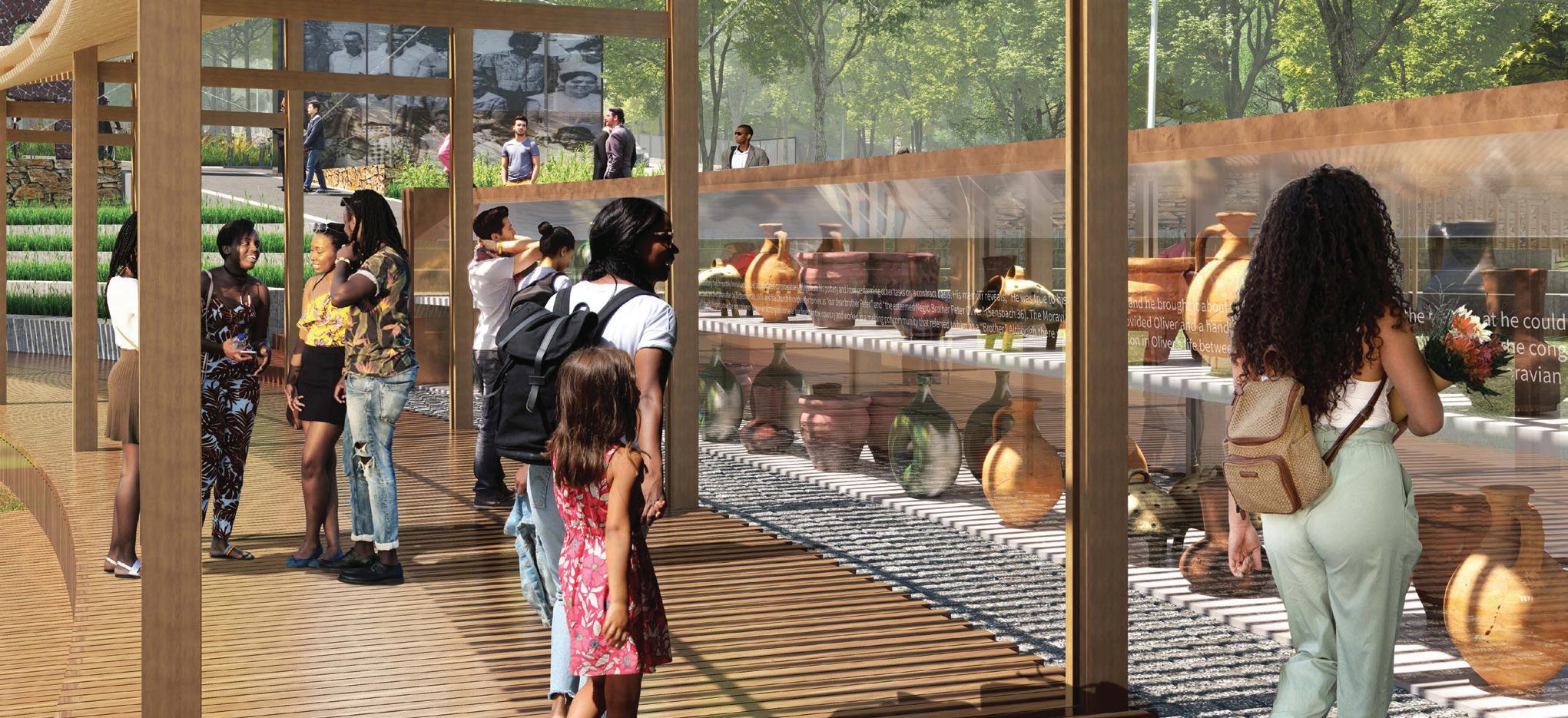
· An ancestral wall telling the story of Peter Oliver and his descendants.
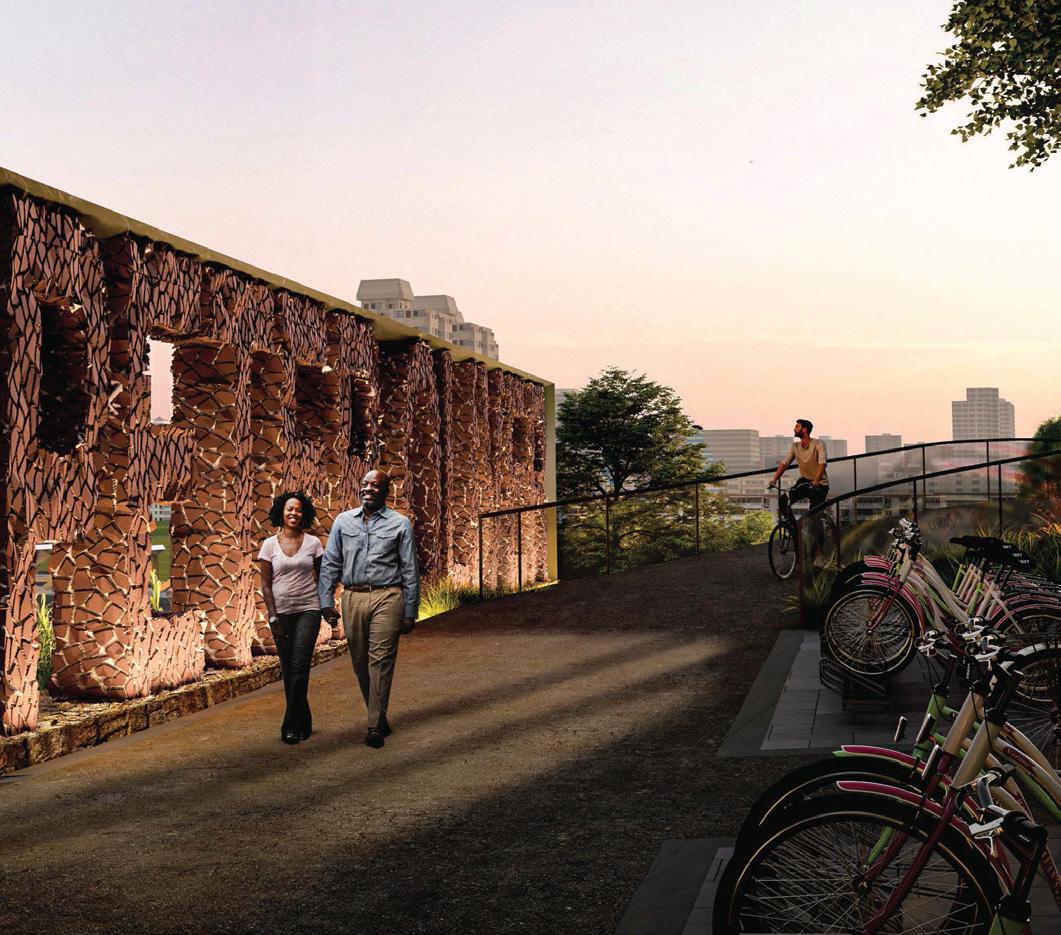
Celebrating Peter Oliver’s legacy, the excellence that followed after him
More than 200 years later, Peter Oliver’s descendants have made their mark in Winston-Salem, including members of the Oliver, Benbow, Jones, and Paul families. Dr. Raymond Oliver was a local dentist and integration pioneer in the 1960s. His children include another dentist and a district court judge. NBA superstar Chris Paul is also a descendant. Paul started his basketball career at West Forsyth High School and Wake Forest University before becoming one of the all-time great NBA point guards. He recently completed his undergraduate degree from Winston-Salem State University.
The Creative Corridors Coalition board of directors includes Peter Oliver descendants Hobart Jones and Sandra Brown. The stretch of Liberty Street just south of Salem Parkway has taken on new meaning for Brown in recent years: “My family and I passed by that street all my life and never knew that my ancestor, Peter Oliver, had a farm there. It touches your heart—I never knew I was connected to it.”
including a MacArthur “Genius Grant” in 2019. He designed the iconic landscaping for the International African American Museum, which opened in June 2023. In addition, Hood Design Studio is collaborating with Liollio Architecture on a reimagining of Discovery Place Nature in Charlotte.
World-renowned landscape architect Walter Hood, was commissioned to design the space. He’s a Charlotte native who has had a long and illustrious career since graduating in the first landscape architecture class at North Carolina A&T State University in 1981, winning numerous awards,
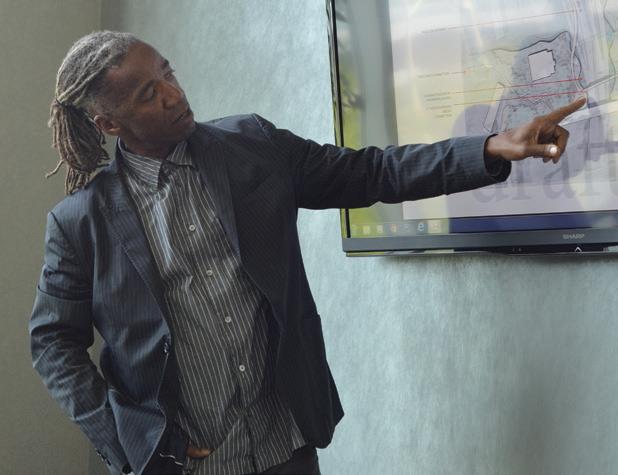
Hood has worked hand in hand with the Oliver family to make the design meaningful to them and the larger community. The family wanted a celebratory space that would welcome both Oliver’s descendants and the general public. The Peter Oliver Pavilion Gallery will offer a place for gatherings and celebrations. It will tell an unfolding story about the dark stain of slavery and the ingenuity of a man who slipped the shackles of bondage and followed his own path. It also offers the opportunity to explore the complex, often untold, history of the lives, struggles, and contributions of other African Americans integral to the building of Winston-Salem throughout the years. People of all backgrounds, young and old, can learn and celebrate in this place of discovery, reflection, and beauty.
This is an exciting time for all of us, the Oliver family and the Winston-Salem community because this is for all of us. –Robin Paul, Peter Oliver descendant and Capital Campaign Co-chair
Building a thriving cultural corridor for residents and visitors to enjoy
The Peter Oliver Pavilion Gallery will be a city managed public space, standing just south of the Salem Parkway along Liberty Street on the southend of downtown Winston-Salem. The site is just adjacent to the national landmark historic district and major tourist attraction Old Salem Museums & Gardens. The project’s direct neighbor will be the Museum of Understanding, Storytelling and Engagement (MUSE Winston-Salem), a kindred partner that has been active in this project for several years. Two major greenways will intersect at the site. The one-mile Strollway that runs north to south and the multi-use path which goes east to west. These paths will connect people walking or biking from various parts of the city to downtown and encourage exploration of nearby destinations such as Kaleideum, Corpening Plaza, Old Salem Museums & Gardens, Salem Academy and College, and the University of North Carolina School of the Arts. The Pavilion Gallery will be an anchor along this fantastic new cultural corridor in downtown Winston-Salem.
The Peter Oliver Pavilion Gallery will be an asset to multiple communities across the region, not only for residents to enjoy, but as a source of economic development. Creative Corridors Coalition envisions the space being used for art, music, food and cultural events, as well as school field trips and other educational activities. The unique space will attract people interested in the history of Winston-Salem and contributions of the AfricanAmerican citizens to our community. It will add to an existing ecosystem of cultural and historical destinations, and the tourism draw will support local restaurants, hotels and other businesses. Substantial construction expenditures will also provide engineering, construction, landscaping, research, tourism, and other job opportunities, and will bring pride, vibrancy, and a sense of interconnectedness between sometimes divided communities with opportunities for education and engagement.
In a broader sense, the Peter Oliver Pavilion Gallery will also connect Winston-Salem to other sites that honor the memory and struggle of enslaved African-Americans, from Raleigh’s Freedom Park, Durham’s Pauli Murray Center for History and Social Justice, and Greensboro’s International Civil Rights Center and Museum. Together these sites help tell the previously untold stories to a national stage.
This project is going to contribute to understanding the diverse history and culture of a place that should be celebrated. It’s great to have this memory in between Winston and Salem, because Peter Oliver’s story, in a way, is the story of Winston-Salem.
–Walter Hood, Creative Director and Founder, Hood Design Studio




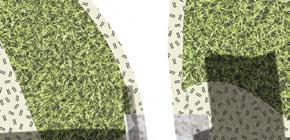



























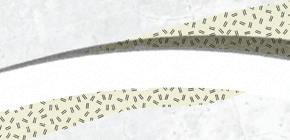

























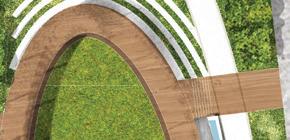


















































Merschel Park
Kaleideum Museum
Corpening Plaza 4 Strollway Bridge
Peter Oliver Pavillion Gallery 6 MUSE Winston-Salem
God’s Acre (Peter Oliver’s gravesite) 8 Old Salem Museums & Gardens 9 Salem Academy and College 10 St. Philips Moravian Church (African American) 11 UNC School of the Arts 1 2 3 5 8 7 9 11 10 SALEM PARKWAY STROLLWAY LIBERTY STREET MAIN STREET E. SALEM AVENUE OLD SALEM ROAD MARSHALL STREET WAUGHTOWNSTREET 4 6 Winston-Salem
1
2
3
5
7
Bridging the past and present through innovative storytelling and landscape design
Winston-Salem residents and travelers to the area already enjoy the results of work done by the city’s Creative Corridors Coalition (CCC) since its formation in 2007. The eye-catching twin arches across US Route 52 and new pedestrian bridges across Salem Parkway—formerly Business 40— won nine awards, including a national engineering honor. One of those bridges, the Strollway pedestrian bridge, was designed by Walter Hood. Almost as significant as the architectural fingerprints left by Creative Corridors, is the precedent set by the organization community engagement process in developing a master plan for the downtown corridors and ultimately the designs for specific bridges and roadways. And as a result has impacted how NC DOT approaches public engagement on future roadway projects in North Carolina.
After the Strollway bridge was completed, Creative Corridors invited Walter Hood back to Winston-Salem to begin thinking about the plans for the new park that would be created at the foot of the bridge. Just weeks before Walter arrived, Creative Corridors had connected with new research by Old Salem that discovered Peter Oliver’s homestead was at the very site Hood would be designing. Creative Corridors Coalition board was immediately captivated by the incredible story of Peter Oliver’s life and legacy and began exploring how to commemorate and celebrate it as part of the design for this space in the heart of Winston-Salem. In the years since, the Coalition has worked closely with city, county, and state elected officials and staff on the development of this project and has received overwhelming support. The initial response to the Peter Oliver Pavilion Gallery has been extremely positive on a local, regional and national level—and excitement continues to grow!
Making the dream a reality for generations to come
Creative Corridors, which has already collaborated to build physical bridges in our community, is now guiding the development of a cultural and historical one. We are raising $8 million to make these plans and dreams a reality. With your help, Winston-Salem can tell a vital story to local, state, national, and international audiences. Your generous contributions can honor this remarkable individual and generations of his descendants while creating a beautiful new gathering place in the heart of the city.
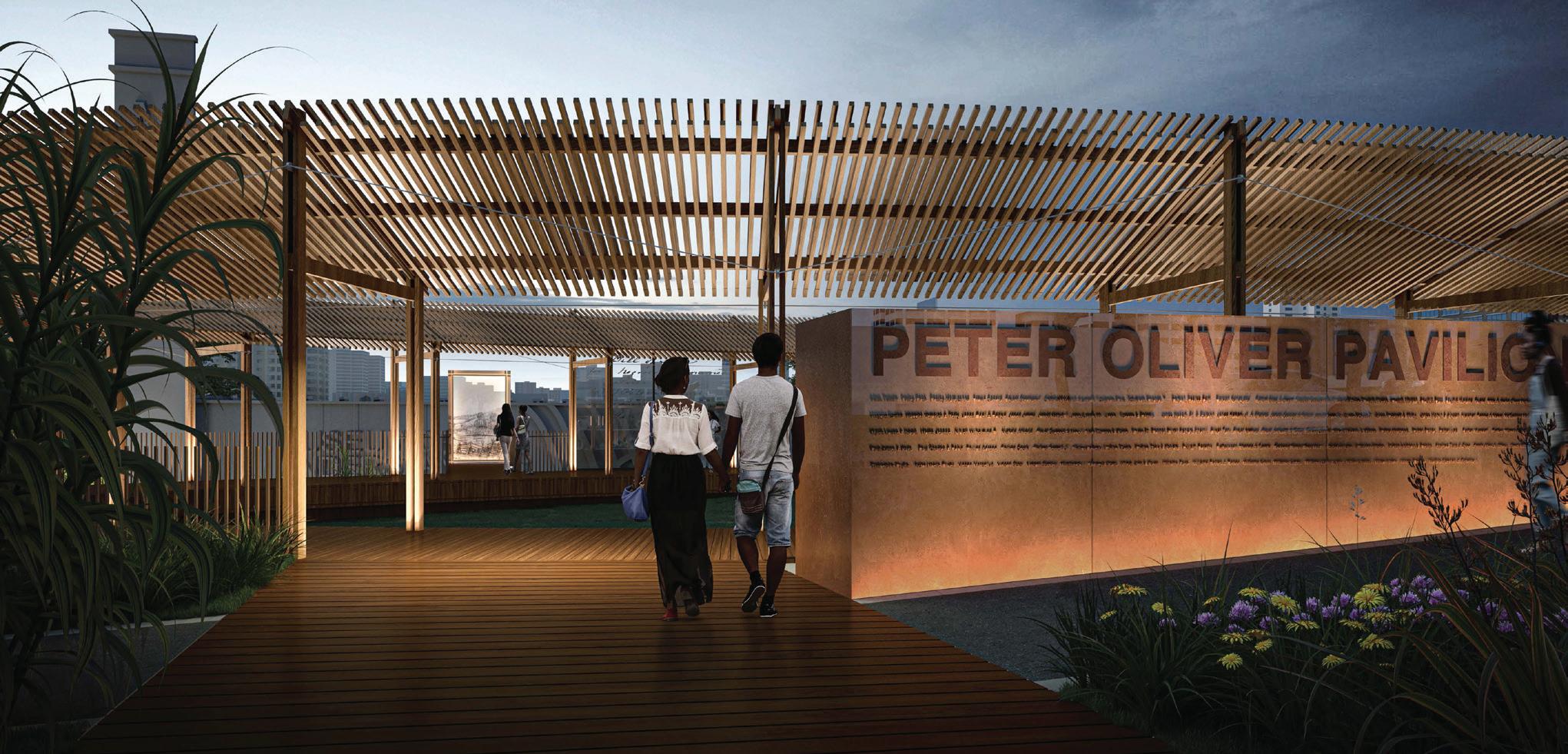
To make a one time contribution or multi-year pledge of support visit CreativeCorridorsCoalition.org and look for the donate button or contact us directly at CreativeCorridorsCoalition@gmail.com
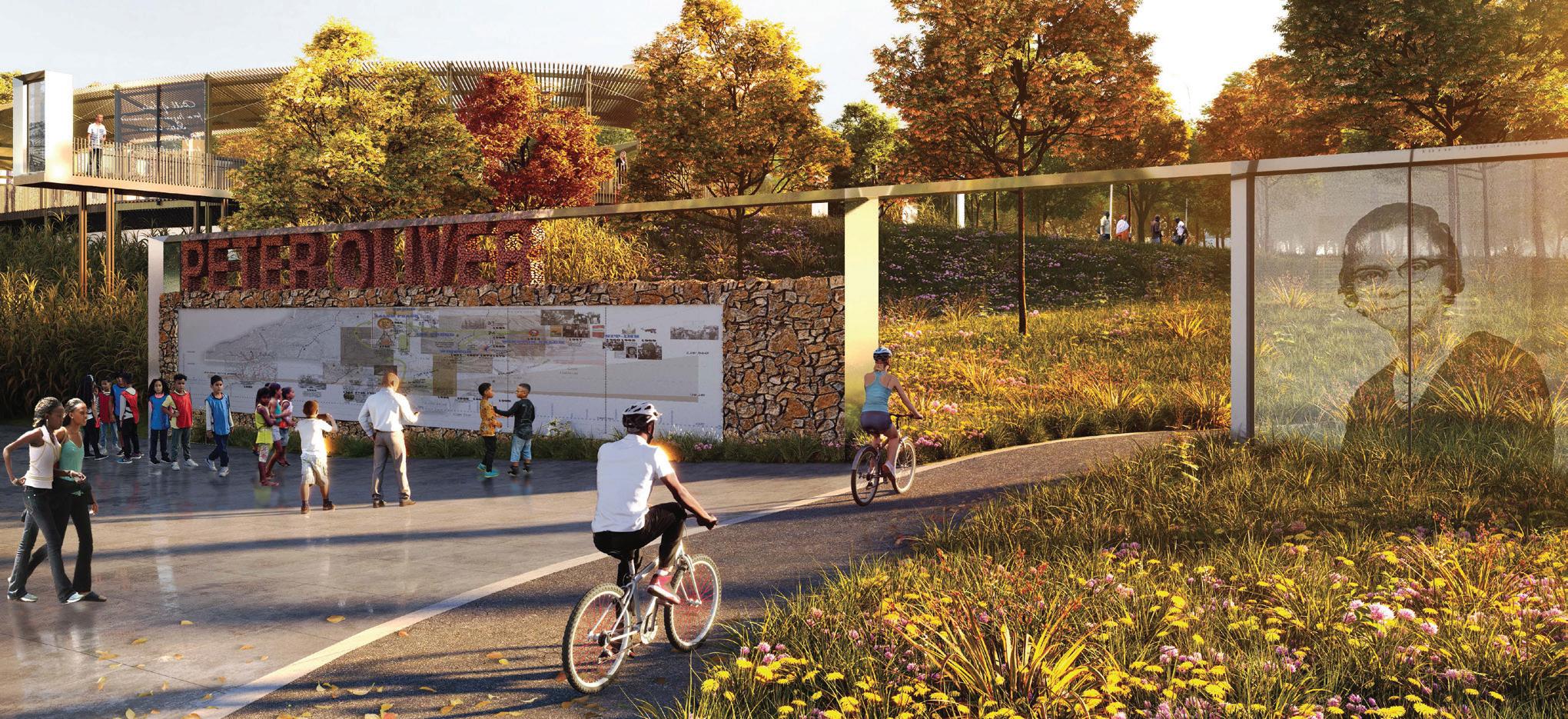
SUPPORT THE PETER OLIVER PAVILION GALLERY
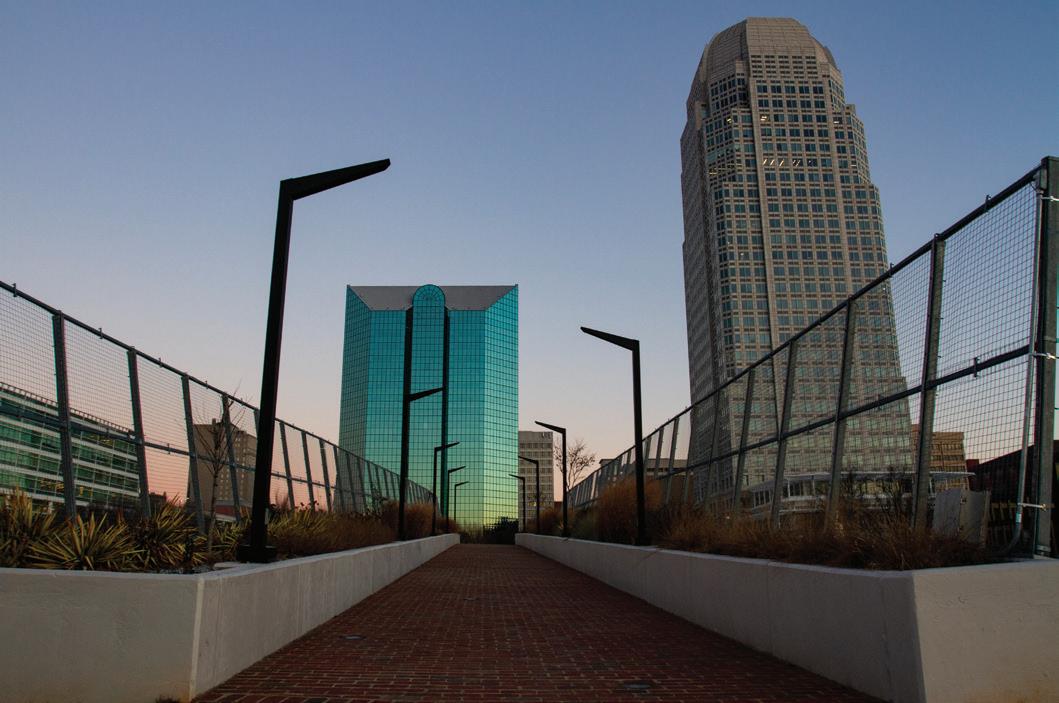
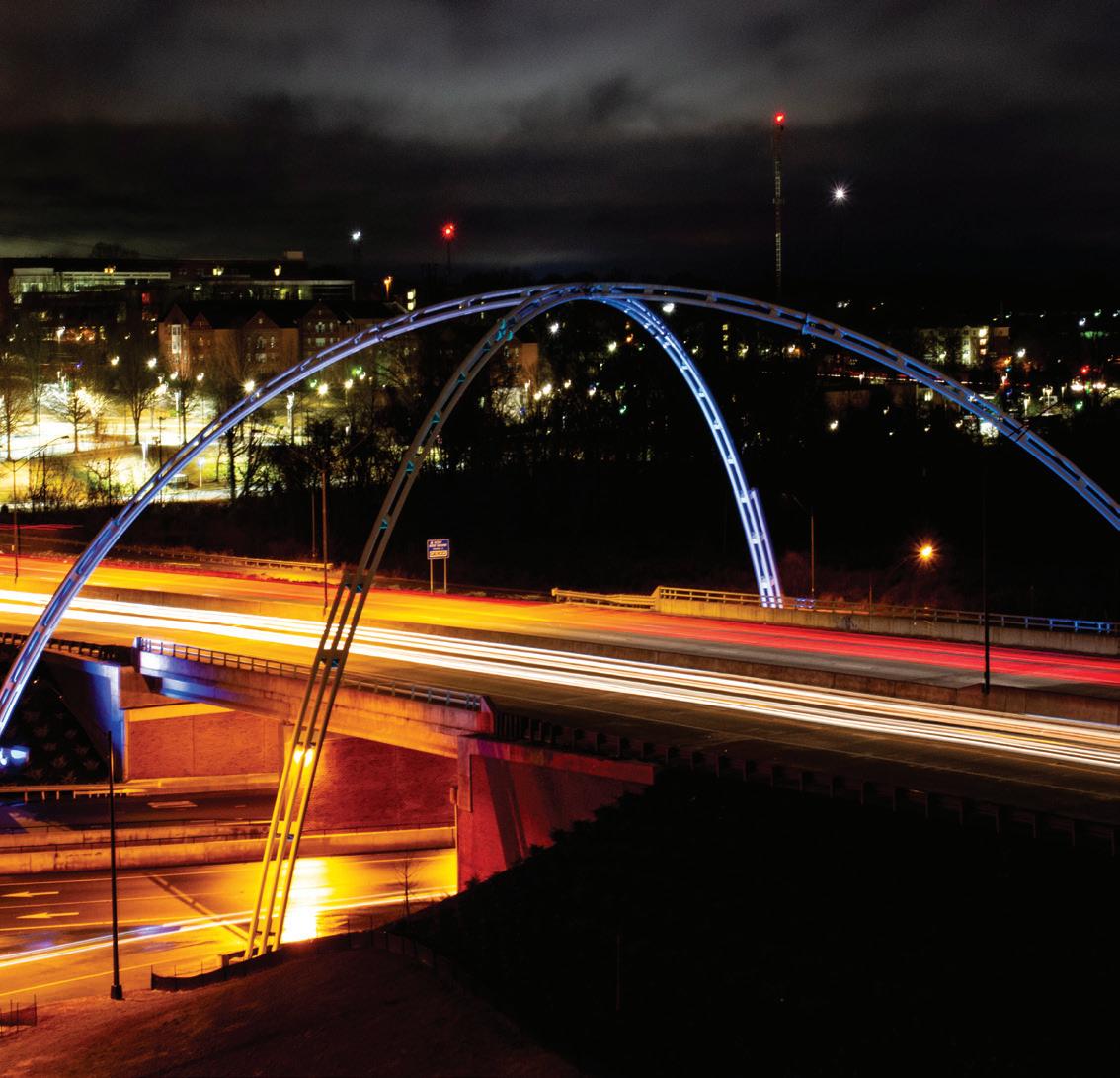

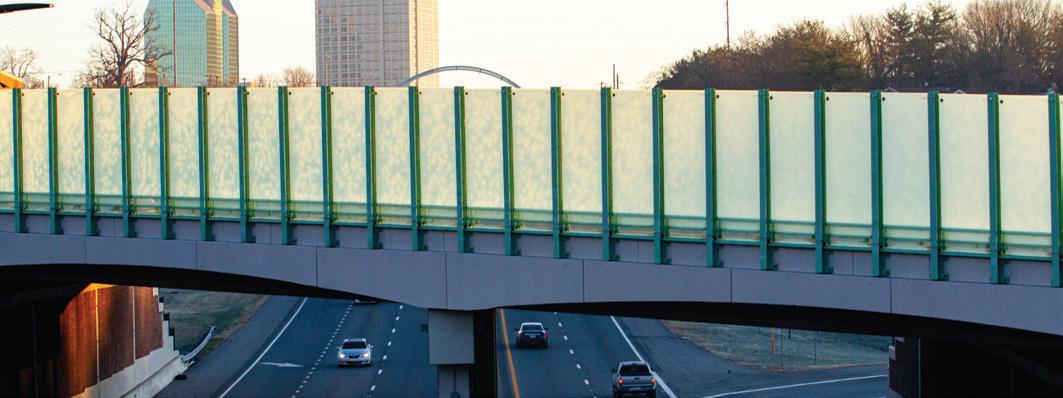
creativecorridorscoalition.org · creativecorridorscoalition@gmail.com · facebook.com/creativecorridors · @cccofws Green
Bridge Strollway Pedestrian Bridge
Street Pedestrian
Twin Arches
Peters Creek Parkway Bridge
The Creative Corridors Coalition’s vision and leadership resulted in these transformative projects for Winston-Salem.










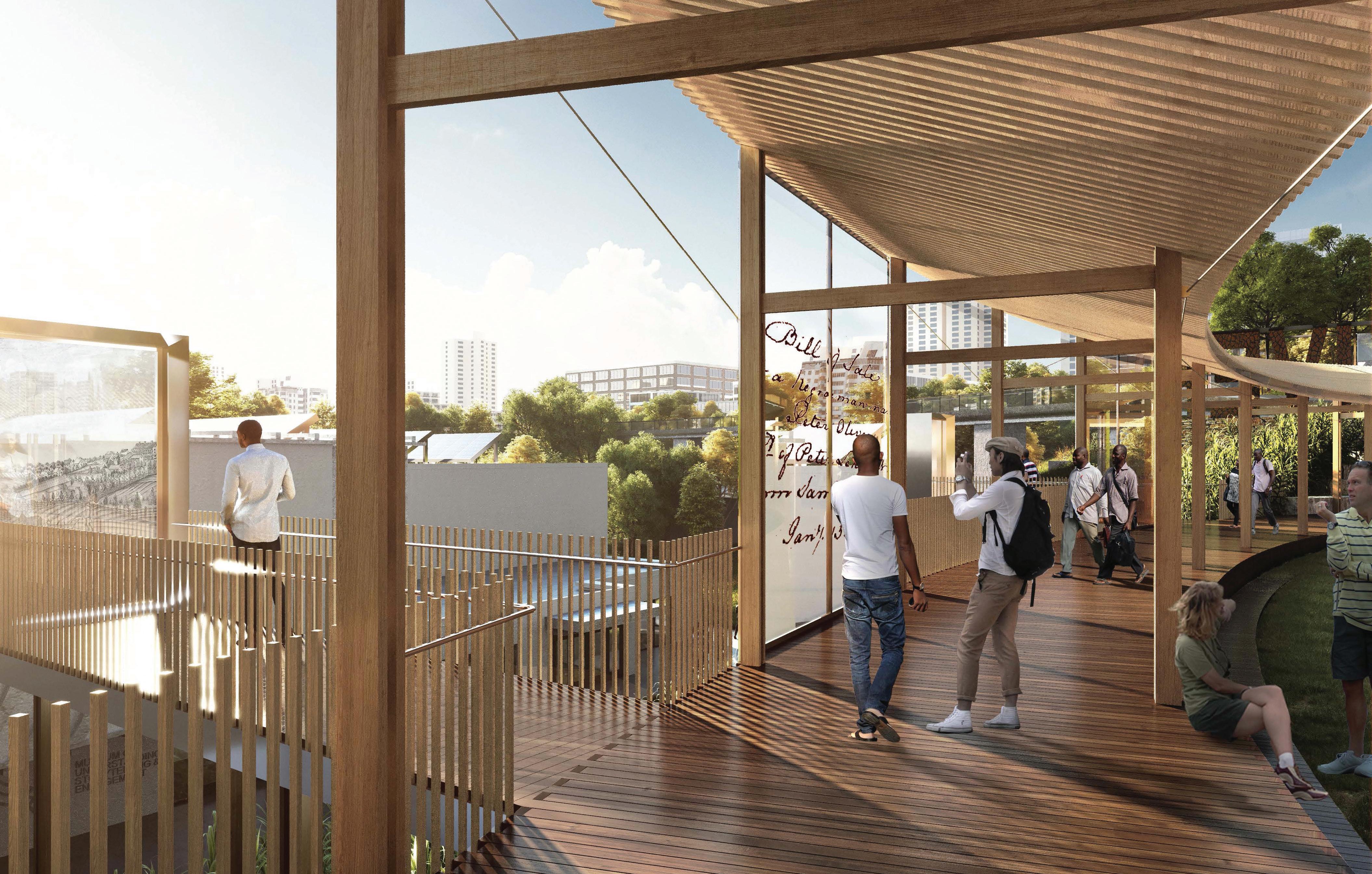


















 Courtesy of Old Salem Museums & Gardens
Courtesy of Old Salem Museums & Gardens


















































































































